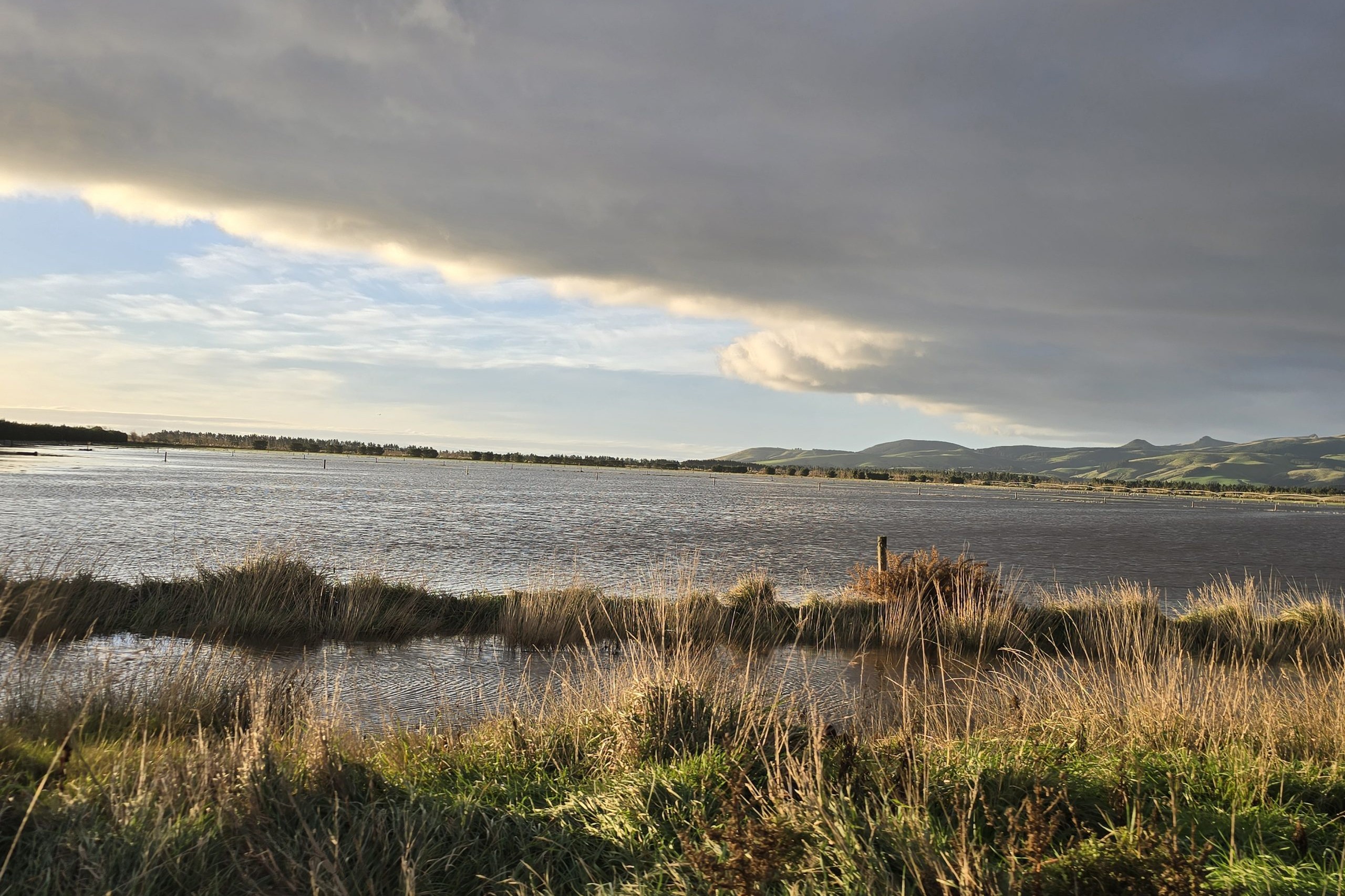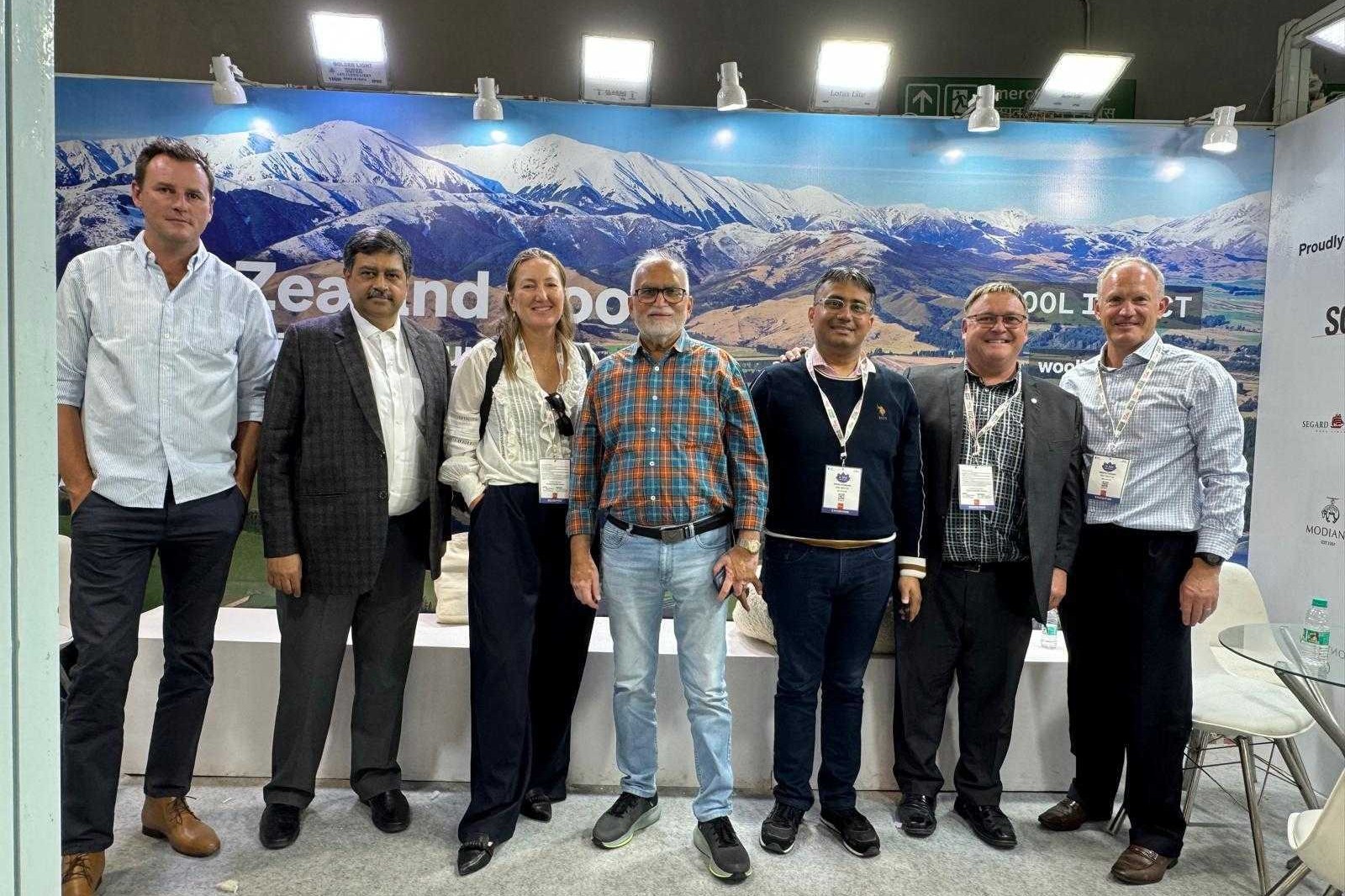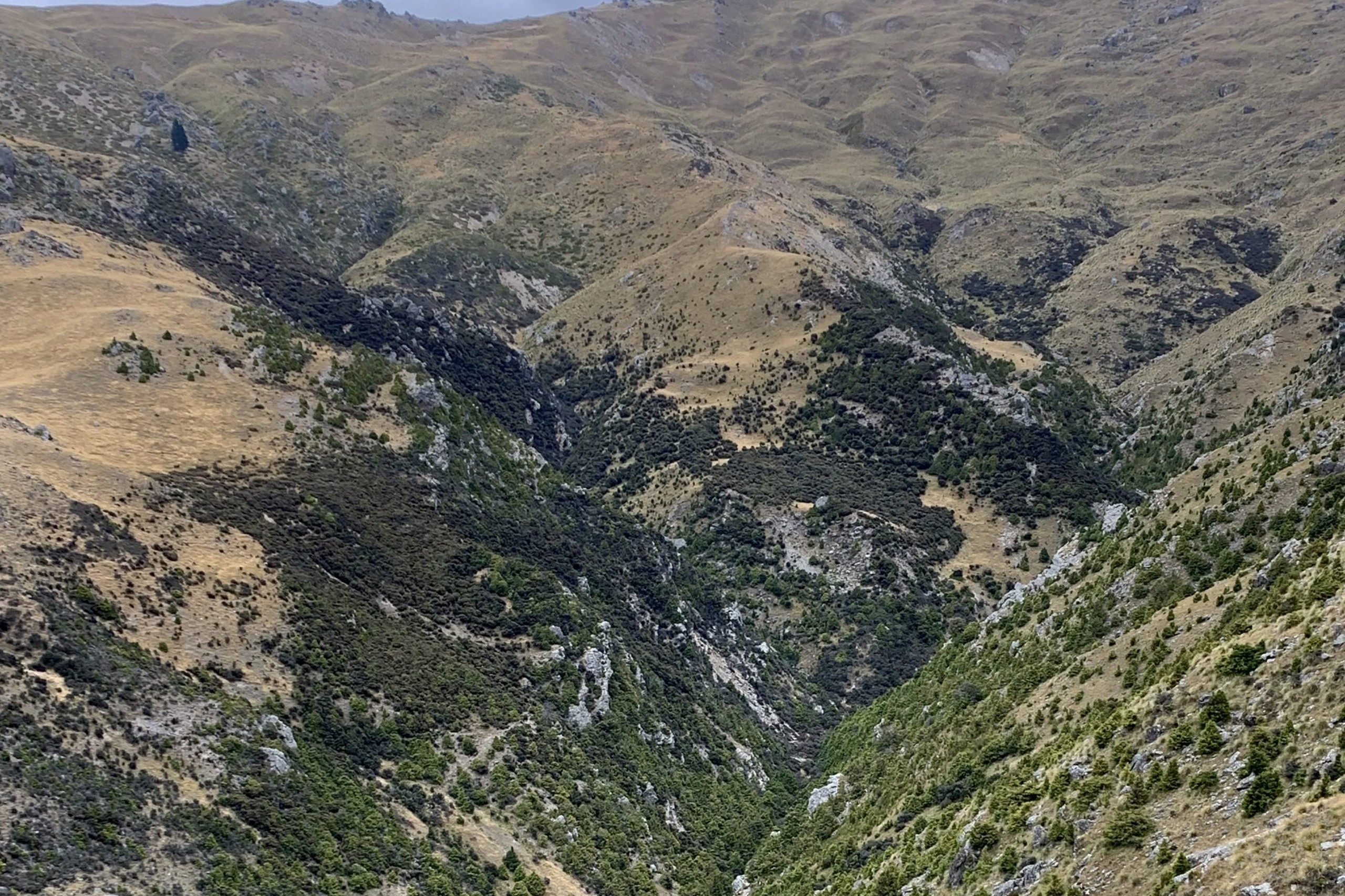An amalgamated farming operation of 5000 hectares on the south side of Banks Peninsula is under constant scrutiny from potential customers. Sandra Taylor reports. Photos by Johnny Houston.
If lining-up ducks wasn’t in Matt Iremonger’s job description it should have been.
Juggling the management of a range of farm environments with stock, crops and the imperative to generate a return on a significant investment in irrigation is, Matt says, a bit like playing chess in the dark with one arm tied behind his back – and he obviously loves it.
Added to the complexity is the location of the multi-farm operation Matt manages alongside his wife Katy. Sitting either side of State Highway 75, the route to Akaroa, means the business is under scrutiny from tourists, local day-trippers and holidaymakers all of whom Matt views as customers – or potential customers – and are treated accordingly.
“Everyone that drives past is potentially a customer so we want our staff to be friendly and courteous and ensure that every interaction is a positive one,” Matt says.
They have tried growing chicory but this feed is also sought after by the many thousands of Canada Geese that live on nearby Lake Ellesmere.
Matt and Katy came to Willesden Farms – which is the consolidation of eight separate farms – 18 months ago when the farming business, owned by Brent and Belinda Thomas and Brent’s father David was entering a period of consolidation.
Development of an irrigation system which waters 460 hectares of the 5000ha business had been completed at a cost of about $8000/ha (including fencing and water systems as well as the irrigation infrastructure) so there was an imperative to start generating a return on this significant capital investment.
This meant every animal and every crop needed to be performing well and taking a new-broom approach, Matt and Brent culled all but the best performing ewes and cows and used these animals as a platform upon which to build their future sheep and beef herds.
One of the idiosyncrasies of their business is the high beef-to-sheep ratio with 1500 cows calving last spring, although 600 are Mt Linton cows run in a share-farming arrangement with Willesden.
Matt says they run a high proportion of cattle because they have the large-scale infrastructure to cope with cattle and the geographical spread of the farms is better suited to cattle which are less labour-intensive than sheep.
A recently installed large-scale reticulated water system on the hill country has also opened up more country for cattle, particularly over summer.
Ultimately, they would like to run 2000 breeding cows and 10,000 ewes (6200 ewes and 3500 hoggets went to the ram this year) and this year aim to mate 1900 breeding cows, both naturally and through artificial insemination and embryo transfers.
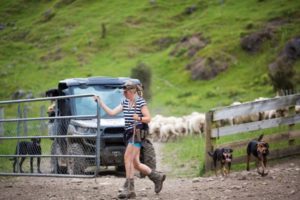
Breeding cows also suit some of their later hill country – where pasture growth doesn’t really start until late spring.
Rainfall and terrain both vary significantly within a short area over the Willesden business, with rainfall ranging from 550-1100mm while the farm runs from sea level to above 850 metres.
Matt says one of the real strengths of the business is that throughout the year, there is always grass growing on some part of the farm.
A recently acquired block between Lake Ellesmere and the Pacific Ocean is what Matt refers to as Goldilocks land – it’s not too hot nor too cold. This Spit country is a frost-free environment and while it feels exposed, there is little wind and the soils are a mix of heavy and warm, easy-draining, giving them a range of options for both livestock and crops.
The farm has consents to irrigate 300ha of this Spit country and 130ha will be up and running in later December, with the balance going in early 2019.
All stock bred on the farm is finished within the business and to drive both productivity and profitability in their ewe flock they have introduced Texel genetics by using a RomTex ram. They have used these genetics for the past two years and will use a composite ram over the progeny.
They will then stabilise the breed, potentially using a straight Romney. To speed the flock-building process they have bought in ewe lambs as Matt says they need to build ewe numbers in order to get good numbers of lambs in spring to feed into the irrigated part of the farm.
Matt and Katy have a policy of aiming to wean lambs early – at between 70 and 80 days – and these lambs are run straight on to irrigated leafy turnip feed crops. They have tried growing chicory but this feed is also sought after by the many thousands of Canada Geese that live on nearby Lake Ellesmere.
Early weaning means the lambs are not competing with their mothers for high-quality feed and it also allows the ewes to regain body condition before going back out to the ram in autumn.
With the feed available under irrigation they aim to grow the lambs to 19-20kg carcaseweight.
Almost all the lambs are contracted, more for security of income rather than extracting premiums. As Matt says, it is the number of lambs they sell each year that is a critical driver of income in their business.
This year the ewes scanned 181% and tailed 148% a pleasing result from a flock in a rebuilding phase.
Cattle premiums targeted
The Willesden cattle operation targets the premium end of the market aiming for heavy carcases of 350kg and good marbling. Genetic selection and management are geared to hitting premium targets and this includes a policy of carrying finishing cattle through a second winter to achieve them.
“We also think there is a big opportunity to try and produce a product when there is less supply volume,” Matt says.
He sees their real strength is their ability to winter cattle at low cost – thanks to the acquisition of the warm, free-draining Spit country.
This means cattle are on forage crops -fodder beet and kale – that are dry and warm and the frost-free environment makes for high feed utilisation and a reduced need for supplement.
“The new block means we can winter cattle more efficiently.”
They require less feed to maintain and there is little wastage.
Matt says it is still a cost but not a huge cost and they are growing well.
“If we didn’t have that land, we would have them sold and processed before their second winter.”
Like the sheep, the cattle are weaned relatively early and run on to the irrigated forages and pastures.
Because of this two-year finishing policy, they pay less attention to weaning weights and when selecting genetics, they are looking at 600-day growth rates as they want those heavy carcases. Intra-muscular fat is also a critical trait as they want to produce grass-fed beef that gives the customer a great eating experience for which they are willing to pay a premium.
They use a Charolais terminal sire, but are working with Te Mania Angus stud in their artificial breeding programme and this includes transplanting embryos from Te Mania cows.
While the hill country is ideal for the breeding cows for much of the year, the valleys can get very wet and cold and Matt says they will look to get cows off this country over winter and run them on the Spit country.
Environmentally, this is a sound management strategy as getting cows off the wet hill stops pugging and is better for animal welfare. Importantly it also stops sediment, nutrient and phosphate losses, critical when farming so close to the environmentally fragile Lake Ellesmere.
It also makes financial sense and Matt says they need to protect their greatest asset which is their soil.
Removing cattle from the hill at various times spells the land and gives pasture covers an opportunity to build for calving and lambing.
While the Spit country sits adjacent to Lake Ellesmere, the nature of the soils – warm and dry pea gravel – and the drainage system means nutrient losses are minimal and what there is moves out toward the ocean rather than into the lake.
As part of their irrigation consent on this Spit country, nutrient losses cannot exceed 15kg nitrogen/ha and Matt is confident they will easily operate within this given the scope of land and the pastures and crops being grown.
Growing maize under film
The irrigation development and acquisition of the Spit has opened a range of opportunities for growing both forage and cash crops which includes high-value specialist seed crops.
Half of the Spit country has heavy soils, ideal for cash crops, while the balance is the pea gravel soils which are ideal for wintering stock. Matt says these soils look like they wouldn’t grow anything, but in reality, they are highly fertile, rich in nitrogen, phosphate, sulphur, lime and have a high pH.
This year they are growing radish and pak choi alongside barley which will be taken to either silage or grain depending on the crop and potatoes, which are grown in partnership with a potato grower.
But one the more exciting crops they are trialling on the Spit this year is maize.
This is the first year they have grown maize, which will be used for silage, and half is being grown under film while the other half is grown conventionally.
Nick Murdoch is agronomy manager on Willesden and has worked on the farm for eight years, holding various roles within the business.
He does all the tractor work and drills all but the specialist crops, namely maize, fodder beet and seed crops.
He is as pleased as Matt is with the maize crop, particularly that in late November it was deemed the most-advanced maize crop in the South Island, according to a Pioneer agronomist.
The maize under film (manufactured from maize residue) was sown on September 10 and will be ready to harvest in February which will allow Nick to get another crop in the ground in autumn.
The conventional crop was sown on October 5 and will be harvested in late March or April.
Under film, the maize cost $1400/ha to establish while the conventional crop cost $1100/ha. Matt and Nick believe the $300/ha difference will be more than made up by their ability to get a crop in the ground in autumn giving them a greater per-hectare return over a 12-month period.
The film is biodegradable and breaks down at a rate that allows the maize seedling to push through once it has good root establishment.
Canada geese are the limiting factor when it comes to crop selection. Rather than try and scare them off or eradicate them, they grow crops they won’t eat and these fortunately include fodder beet and brassicas. The geese won’t bother maize because they can’t land in it.
This year Willesden has 300ha in pasja for finishing lambs and growing out young stock.
Matt says the reason for such a big area under crop is an aggressive pasture renewal policy on the irrigated land. Thistles have been an issue so Matt and Nick are focusing on cleaning up weeds and building fertility before sowing legume-rich permanent pastures.
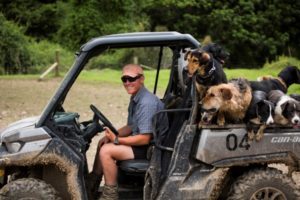
The people factor
Alongside Matt and Katy, Willesden employs six full-time staff and one Lincoln University student in summer and Matt sees the team as critical to the farm’s success.
“We’re fortunate to have great staff.
“Unless we have the right people, we just couldn’t get the right results.”
Block managers are given responsibility for different blocks on the farm and Nick Russell is responsible for all the finishing stock.
Young staff are given a paddock every year and they have to make all the decisions (in consultation with Matt) about management and inputs. Matt says this gives the staff a broad range of farm management skills.
Formal staff meetings are held bi-monthly, but informal gatherings happen most Fridays at 5pm, when staff get together for a well-earned beer and reflection on the week.
Willesden Farms is made up of eight different farms, formerly small family sheep and beef operations. Matt says the block manager system tries to replicate that in a different form within the Willesden operation. It gives the managers significant individual responsibility for running their blocks while benefiting from the economies of scale under the Willesden umbrella.
Environmental management
The Willesden business began with the Thomas family buying 40ha in Prices Valley in 1975. Since then acquisitions have grown the business to what it is today, but from those early days protecting and enhancing their environment has been part and parcel of land ownership.
Brent Thomas’s mother was instrumental in putting a QE11 covenant on a stand of native bush and over the years the family has planted thousands of native plants working alongside the regional and city council, Department of Conservation and the local rununga, with whom they have a strong relationship.
Similarly, Matt talks a lot about environmental management and sees that it is intrinsically linked to financial management. He says environment enhancement adds to the capital value of the land and just as importantly, good environment management protects the soil, water and nutrient resources that are fundamental to their farming business.
Nutrient budgets and farm environment plans have been drawn up as part of their consenting process and are seen as a farm management tool.
Irrigation development
While the capital cost of the irrigation on Willesden has been large, it is a low-cost system because the water is virtually at ground level, so pumping costs are minimal. While the wells have been drilled to a reasonable depth, the water surges so it is only being pumped from a maximum of five metres.
Prices for lamb and beef mean they are able to generate a return on the investment in irrigation but Matt is honest when he says he cannot guarantee this will always be the case. But the mix of crops and a drive to produce product at the premium end of the market coupled with low cost wintering systems he believes, makes for a sound business case.


